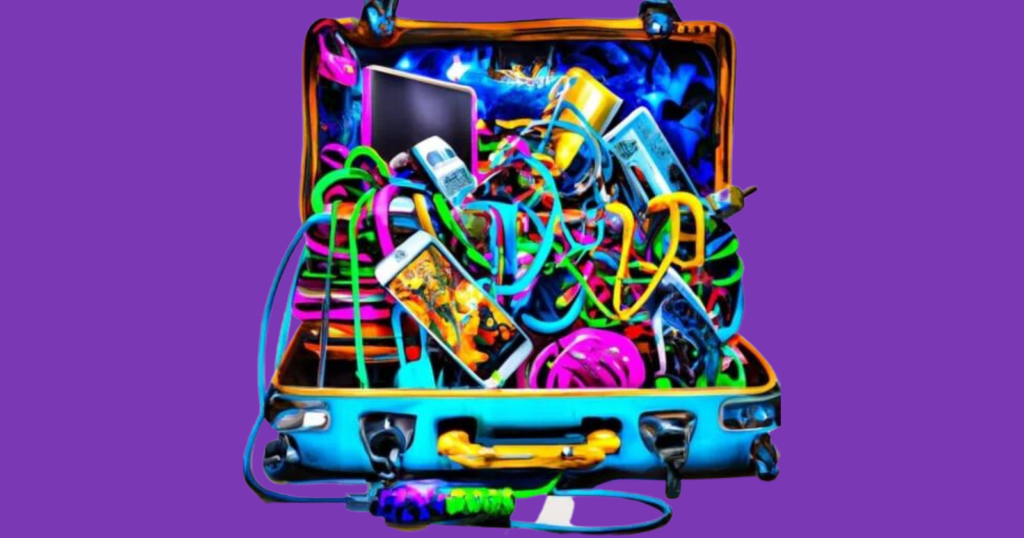When traveling with electronics, it’s crucial to ensure that your devices stay safe and secure throughout your journey. From packing techniques to navigating airport security, this guide will provide you with expert advice on how to travel with electronics without a hitch. With these tips, you’ll be able to enjoy a stress-free trip and keep your gadgets in top shape.
Choosing the Right Bag for Your Electronics
Finding the perfect bag when traveling with electronics can make all the difference in keeping them safe and organized during your travels. When selecting a bag, focus on both protection and accessibility.
Quality and Protection
Select a high-quality bag specifically designed for traveling with electronics. Look for features like padded compartments, water-resistant materials, and secure zippers. These qualities will help protect your devices from damage during transit.
Accessibility and Organization
Choose a bag with multiple compartments and pockets, allowing you to easily access your devices when needed. This will also help you keep your electronics organized, making the TSA process smoother.
Packing Your Electronics Safely and Efficiently
Once you’ve chosen the ideal bag for your devices, it’s time to focus on packing them securely and efficiently. Follow these tips to ensure your electronics remain protected during your travels.
Use Protective Cases
Invest in protective cases or sleeves for your devices, especially for laptops, tablets, and cameras. These cases will provide an extra layer of protection against scratches, dents, and other damage. Look for cases made from durable materials such as hard plastic, neoprene, or leather to ensure they can withstand the rigors of travel.
Some cases also come with additional features like water resistance, built-in stands, or compartments for storing accessories. By choosing the right protective case, you can minimize the risk of damage to your devices and keep them looking and functioning like new.

Wrap Cords and Chargers
Wrap cords and chargers neatly to prevent tangling and damage. Use cable organizers, Velcro straps, or even twist ties to keep everything in order. Many travel-focused cable organizers come with compartments for different types of cords, making it easy to keep your chargers and cables separate and tangle-free.
Some organizers even include pockets for USB drives, SD cards, and other small accessories. By taking the time to wrap and secure your cords and chargers, you’ll not only protect them from damage but also make it much easier to find and access the ones you need when you’re on the go.
Pack Strategically
Place heavier items, like laptops, at the bottom of your bag, with lighter items on top. This will help distribute the weight evenly and prevent damage to your devices.
Preparing for airport security is essential when traveling with electronics. Knowing the rules and being ready to follow them can help ensure a smooth and efficient screening process.
Know the Rules
Familiarize yourself with the TSA rules regarding electronics. Laptops and large electronic devices typically need to be removed from your carry-on during the screening process. Smaller items, like smartphones and tablets, can usually stay in your bag.
Be Prepared
As you approach the security checkpoint, be ready to remove your electronics and place them in a separate bin for screening. This will help you get through TSA smoothly and avoid delays.
Keep an Eye on Your Devices
Always keep an eye on your belongings, especially during the screening process. This will help prevent theft or accidental mix-ups with other passengers’ belongings.
Tips for Using Electronics During Your Trip
Once you’ve successfully navigated airport security traveling with electronics, it’s important to ensure their safe and efficient use during your travels. Follow these suggestions to make the most of your electronics while on the go.
Protect Your Data
Before traveling with electronics, ensure that your devices are password-protected and that you have a backup of important files. Consider using a VPN to protect your data when connecting to public Wi-Fi networks.
Bring a Power Bank
A portable power bank can be a lifesaver when you’re traveling with electronics. Choose a reliable power bank with enough capacity to charge your devices multiple times.
Use Travel Adapters and Converters
If you’re traveling internationally, invest in a travel adapter and, if necessary, a voltage converter. This will ensure that you can safely charge your devices in any country.

Frequently Asked Questions (FAQs) Regarding Traveling With Electronics
We know that traveling with electronics can raise some questions and concerns. To help you feel more prepared and confident, we’ve compiled a list of the most frequently asked questions related to traveling with electronics, along with their answers.
Can I pack spare lithium batteries in my checked luggage?
Spare lithium batteries, such as those used in laptops, cameras, and smartphones, are not allowed in checked luggage. They must be carried in your carry-on baggage with the terminals protected to prevent short-circuiting. For more information, visit the FAA’s guidelines on batteries.
How can I keep my devices secure from theft while traveling?
To minimize the risk of theft, never leave your devices unattended in public spaces. Use hotel safes or lockable luggage compartments to store your electronics when not in use. Consider using a theft-resistant bag or backpack with anti-theft features such as slash-resistant materials, locking zippers, and RFID-blocking compartments.
Can I use my electronic devices during the flight?
You can use your electronic devices during the flight as long as they are in airplane mode or have their cellular service disabled. However, you must follow the airline’s specific policies and instructions from the flight crew regarding when you can use your devices, particularly during takeoff and landing.
Additional Resources
If you are looking for more tutorials, walkthroughs, and troubleshooting on TSA, here are some additional posts about TSA:
Conclusion
Traveling with electronics doesn’t have to be a hassle. By following these tips for packing, protecting, and using your devices, you can ensure a smooth and stress-free journey. For more expert travel advice, check out our article on how to get through TSA smoothly and make your next trip a breeze. Safe travels!
